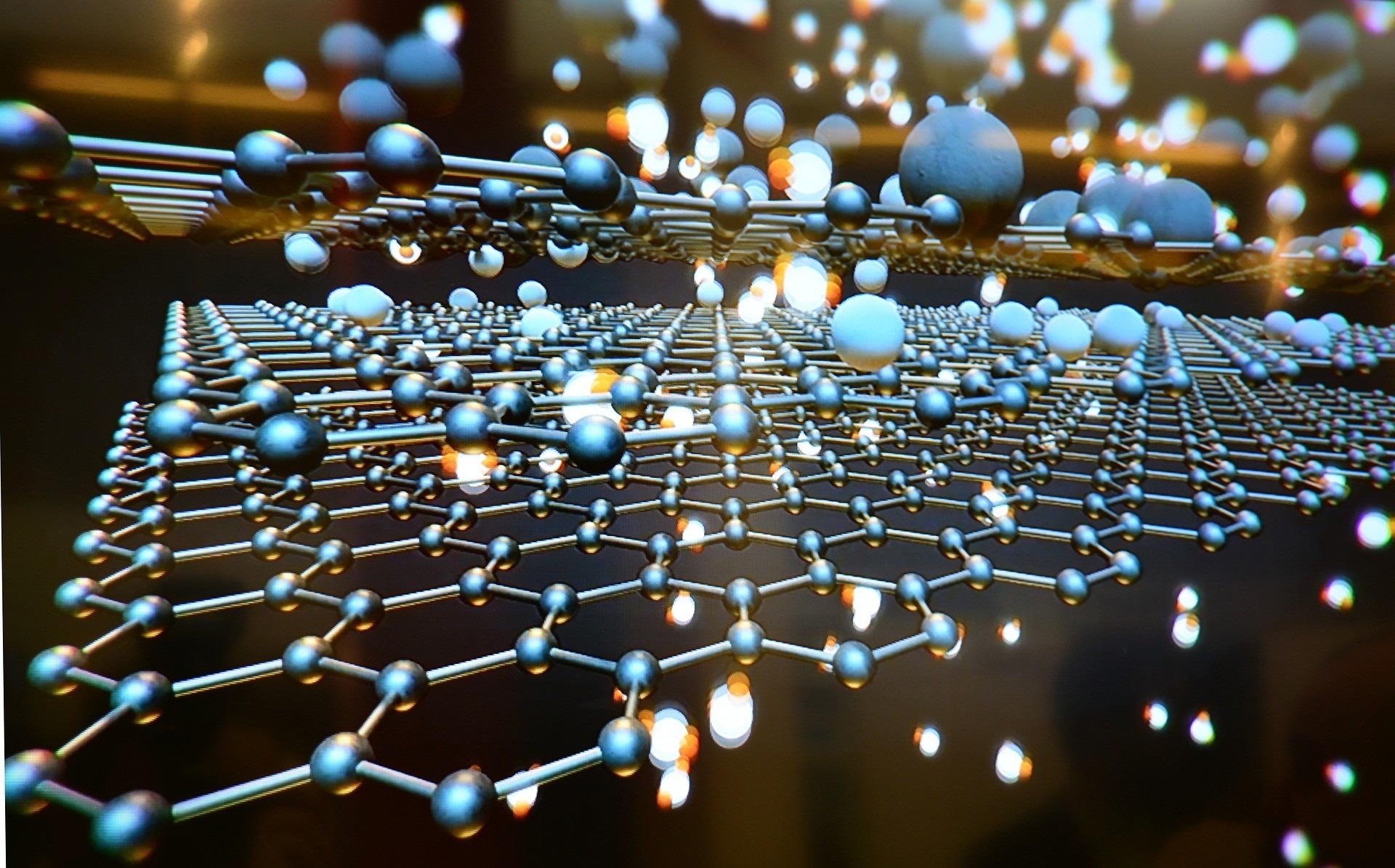Researchers have produced new evidence of how graphene, when twisted to a precise angle, can become a superconductor, moving electricity with no loss of energy.
 Researchers have learned more about the potential of graphene to be a superconductor of electricity. Image Credit: The Ohio State University
Researchers have learned more about the potential of graphene to be a superconductor of electricity. Image Credit: The Ohio State University
In a study published today (Feb. 15, 2023) in the journal Nature, the team led by physicists at The Ohio State University reported on the key role that quantum geometry plays in allowing this twisted graphene to become a superconductor.
Graphene is a single layer of carbon atoms, the lead that is found in a pencil.
In 2018, scientists at the Massachusetts Institute of Technology discovered that, under the right conditions, graphene could become a superconductor if one piece of graphene were laid on top of another piece and the layers were twisted to a specific angle – 1.08 degrees – creating twisted bilayer graphene.
Ever since, scientists have been studying this twisted bilayer graphene and trying to figure out how this “magic angle” works, said Marc Bockrath, professor of physics at Ohio State and co-author of the Nature paper.
“The conventional theory of superconductivity doesn’t work in this situation,” Bockrath said. “We did a series of experiments to understand the origins of why this material is a superconductor.”
In a conventional metal, high-speed electrons are responsible for conductivity.
But twisted bilayer graphene has a type of electronic structure known as a “flat band” in which the electrons move very slowly – in fact at a speed that approaches zero if the angle is exactly at the magic one.
Under the conventional theory of superconductivity, electrons moving this slowly should not be able to conduct electricity, said study co-author Jeanie Lau, also a professor of physics at Ohio State.
Haidong Tian, first author of the paper and a student in Lau’s research group, used great precision to obtain a device so close to the magic angle that the electrons were nearly stopped by usual condensed matter physics standards. The sample nevertheless showed superconductivity.
“It is a paradox: How can electrons which move so slowly conduct electricity at all, let alone superconduct? It is very remarkable,” Lau said.
In their experiments, the research team demonstrated the slow speeds of the electrons and gave more precise measurements of electron movement than had been previously available.
And they also found the first clues as to what makes this graphene material so special.
“We can’t use the speed of electrons to explain how the twisted bilayer graphene is working,” Bockrath said. “Instead, we had to use quantum geometry.”
As with everything quantum, quantum geometry is complex and not intuitive. But the results of this study have to do with the fact that an electron is not only a particle, but also a wave – and thus has wavefunctions.
“The geometry of the quantum wavefunctions in flat bands, together with the interaction between electrons, leads to the flow of electrical current without dissipation in bilayer graphene,” said co-author Mohit Randeria, professor of physics at Ohio State.
“We found that conventional equations could explain maybe 10% of the superconductivity signal we found. Our experimental measurements suggest quantum geometry is 90% of what makes this a superconductor,” Lau said.
The superconductive effects of this material can only be found in experiments at extremely low temperatures. The ultimate goal is to be able to understand the factors that lead to high-temperature superconductivity, which will be potentially useful in real-world applications, such as electrical transmission and communication, Bockrath said.
“It would have a huge impact on society,” he said. “It is a long way off, but this research is definitely taking us forward in understanding how it could happen.”
The Bockrath and Lau experimental groups, including graduate students Tian, Xueshi Gao, Yuxin Zhang, and Shi Che, collaborated with theorists Randeria at Ohio State, and Tianyi Xu, Patrick Cheung, and F. Zhang at the University of Texas at Dallas, and with scientists from the National Institute for Materials Science in Japan.